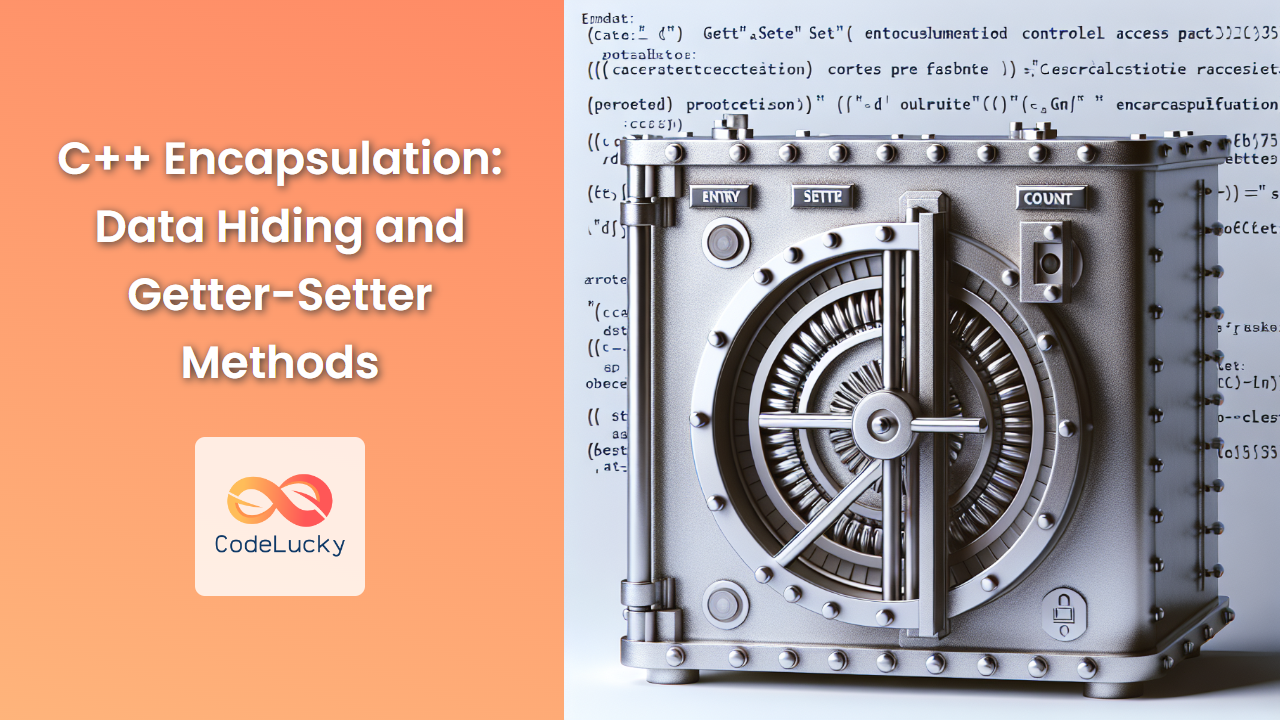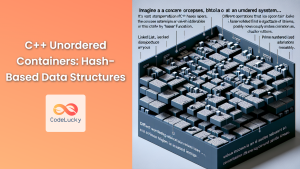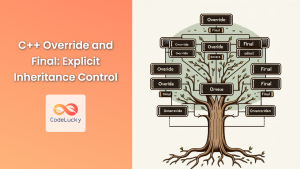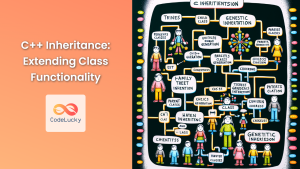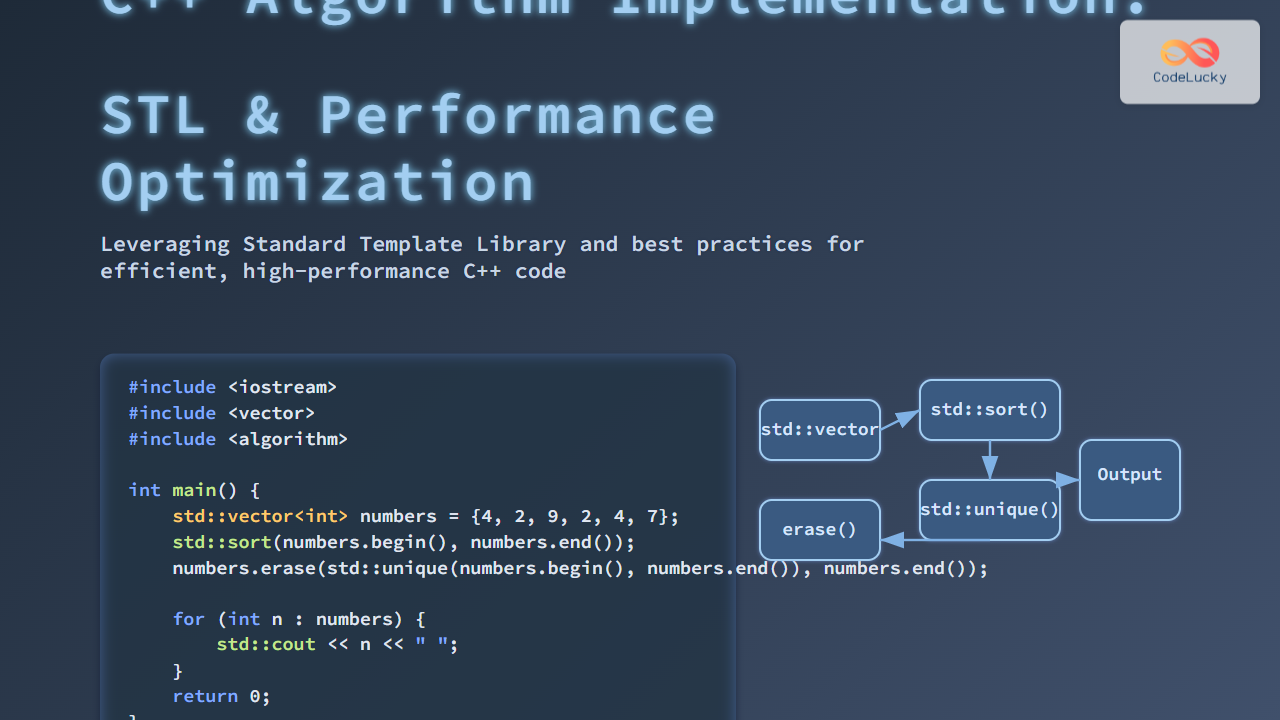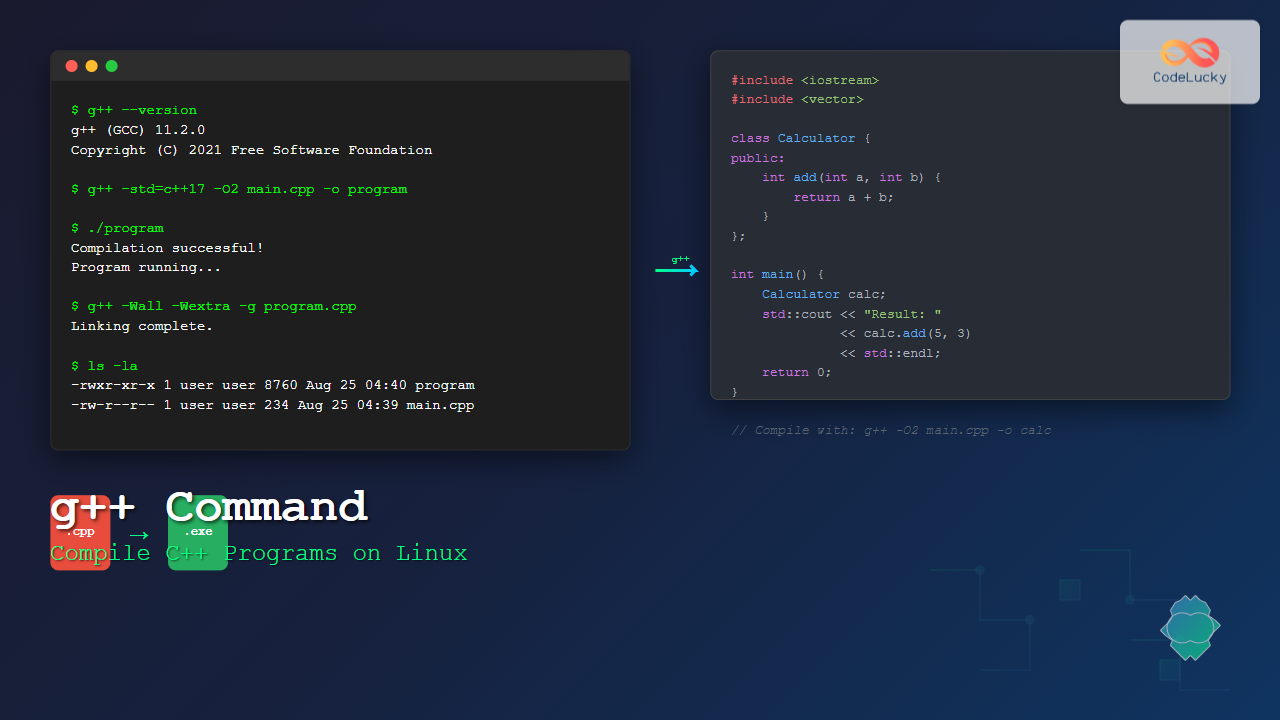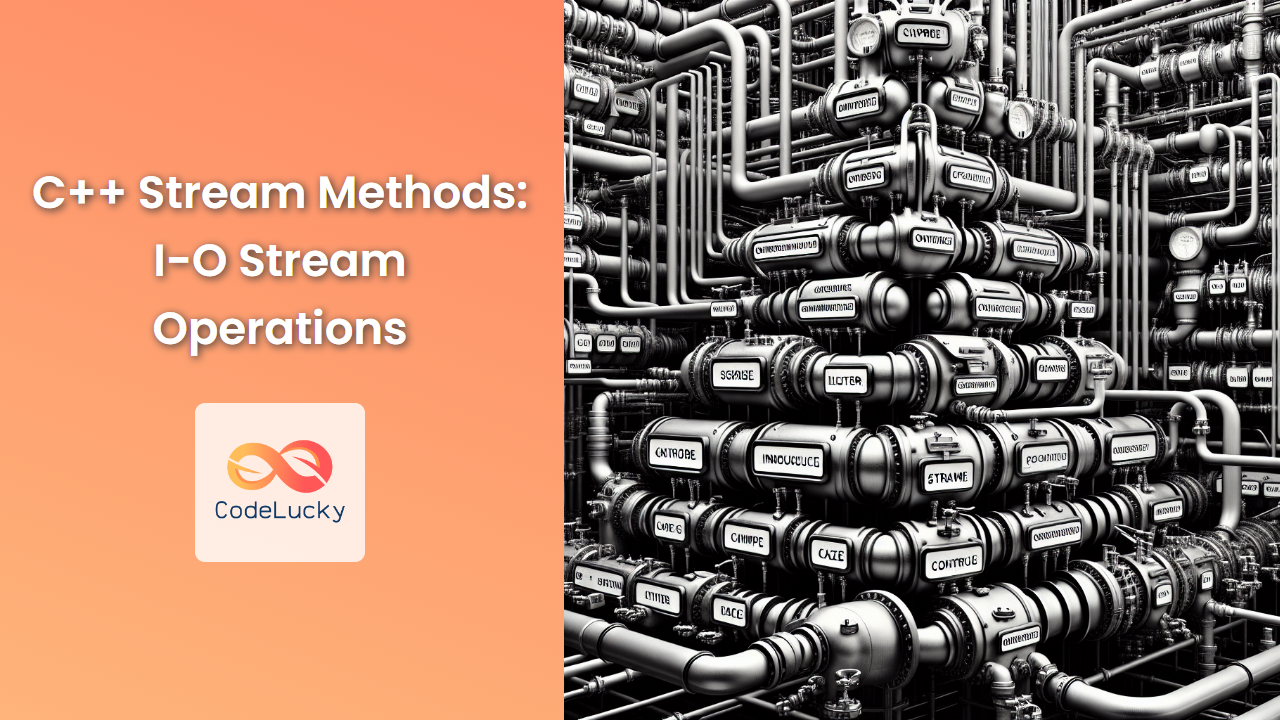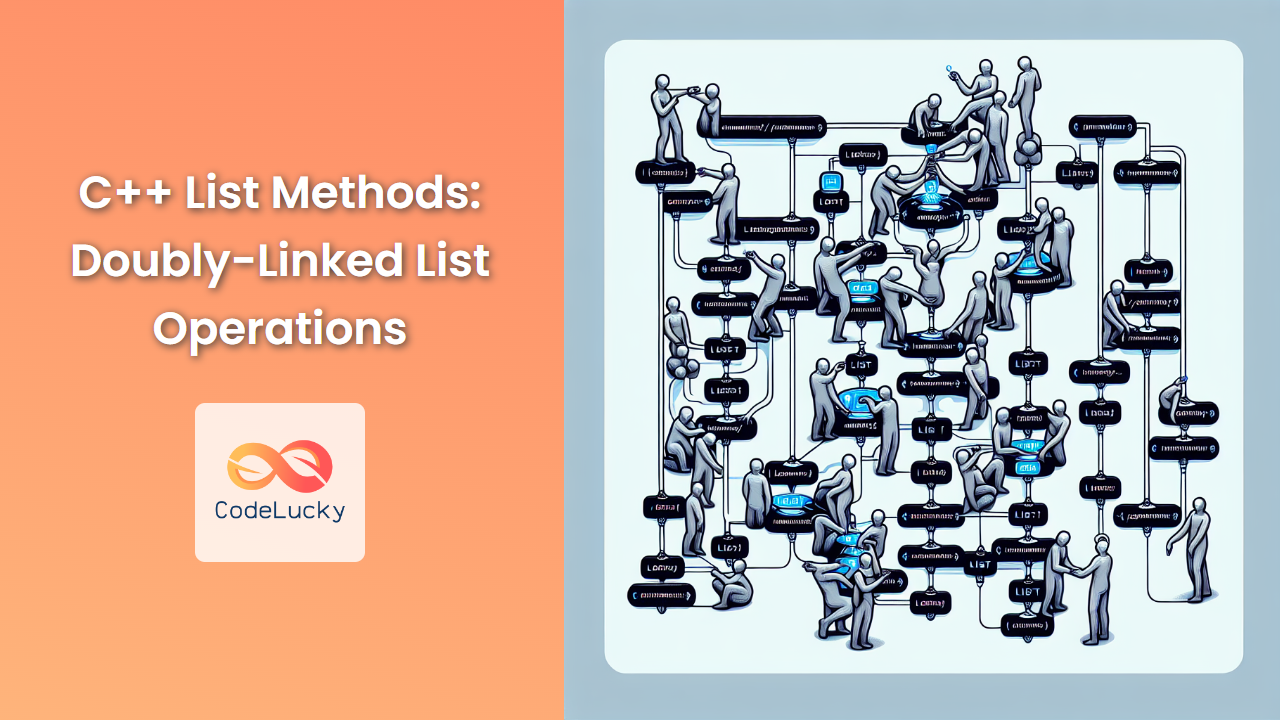Encapsulation is one of the fundamental pillars of object-oriented programming (OOP) in C++. It's a powerful concept that allows developers to bundle data and the methods that operate on that data within a single unit or object. This article will dive deep into encapsulation, exploring its importance, implementation, and best practices in C++.
Understanding Encapsulation in C++
Encapsulation is the technique of hiding the internal details of a class and providing a public interface to interact with the object. It's like a protective shield that guards the data from unauthorized access and modification.
🛡️ Key Benefits of Encapsulation:
- Data protection
- Flexibility to change internal implementation
- Improved maintainability
- Better control over data access and modification
Let's start with a simple example to illustrate encapsulation:
class BankAccount {
private:
double balance;
public:
void deposit(double amount) {
if (amount > 0) {
balance += amount;
}
}
double getBalance() const {
return balance;
}
};
In this example, balance is a private member, inaccessible from outside the class. The deposit method and getBalance function provide controlled access to modify and retrieve the balance, respectively.
Data Hiding: The Core of Encapsulation
Data hiding is the practice of making data members private within a class. This prevents direct access to the data from outside the class, ensuring that the internal state of an object can only be modified through well-defined interfaces.
Let's expand our BankAccount example to demonstrate data hiding more comprehensively:
class BankAccount {
private:
std::string accountNumber;
double balance;
std::string ownerName;
public:
BankAccount(const std::string& accNum, const std::string& name)
: accountNumber(accNum), balance(0.0), ownerName(name) {}
void deposit(double amount) {
if (amount > 0) {
balance += amount;
}
}
bool withdraw(double amount) {
if (amount > 0 && balance >= amount) {
balance -= amount;
return true;
}
return false;
}
double getBalance() const {
return balance;
}
std::string getAccountDetails() const {
return "Account: " + accountNumber + ", Owner: " + ownerName;
}
};
In this enhanced version:
accountNumber,balance, andownerNameare private, preventing direct access.- Public methods provide controlled access to account operations and information.
Getter and Setter Methods
Getter and setter methods are public functions that allow controlled access to private data members. They're crucial for maintaining encapsulation while providing flexibility in how data is accessed and modified.
Getter Methods
Getter methods, also known as accessor methods, allow reading the values of private data members. They typically don't modify the object's state and are often declared as const.
Example of getter methods:
class Rectangle {
private:
double length;
double width;
public:
Rectangle(double l, double w) : length(l), width(w) {}
double getLength() const { return length; }
double getWidth() const { return width; }
double getArea() const { return length * width; }
};
Setter Methods
Setter methods, or mutator methods, allow modifying the values of private data members. They often include validation to ensure data integrity.
Let's extend our Rectangle class with setter methods:
class Rectangle {
private:
double length;
double width;
public:
Rectangle(double l, double w) : length(l), width(w) {}
// Getter methods (as before)
void setLength(double l) {
if (l > 0) {
length = l;
}
}
void setWidth(double w) {
if (w > 0) {
width = w;
}
}
};
Advanced Encapsulation Techniques
1. Computed Properties
Sometimes, you might want to provide access to a property that's not directly stored but computed from other data members.
class Circle {
private:
double radius;
public:
Circle(double r) : radius(r) {}
double getRadius() const { return radius; }
void setRadius(double r) { if (r > 0) radius = r; }
// Computed property
double getDiameter() const { return 2 * radius; }
double getArea() const { return 3.14159 * radius * radius; }
};
2. Lazy Initialization
Lazy initialization is a technique where you delay the creation of an object until it's first needed. This can be useful for expensive resources.
class DatabaseConnection {
private:
std::unique_ptr<Connection> connection;
std::string connectionString;
void initializeConnection() {
if (!connection) {
connection = std::make_unique<Connection>(connectionString);
}
}
public:
DatabaseConnection(const std::string& connStr) : connectionString(connStr) {}
Connection* getConnection() {
initializeConnection();
return connection.get();
}
};
3. Encapsulating Complex Behavior
Encapsulation isn't just about data; it's also about hiding complex behavior behind simple interfaces.
class TaxCalculator {
private:
double income;
std::string country;
double calculateUSTax() const {
// Complex US tax calculation
}
double calculateUKTax() const {
// Complex UK tax calculation
}
public:
TaxCalculator(double inc, const std::string& cntry)
: income(inc), country(cntry) {}
double calculateTax() const {
if (country == "US") return calculateUSTax();
if (country == "UK") return calculateUKTax();
return 0.0; // Default or unsupported country
}
};
Best Practices for Encapsulation in C++
-
Make Data Members Private: Always declare data members as private unless there's a compelling reason not to.
-
Use Const Correctness: Mark getter methods as
constto indicate they don't modify the object's state. -
Validate Input in Setters: Always validate input in setter methods to maintain data integrity.
-
Minimize Public Interface: Only expose what's necessary. Keep implementation details private.
-
Use Access Specifiers Wisely: Utilize
private,protected, andpublicaccess specifiers appropriately. -
Consider Using Friend Functions: When necessary, use friend functions to grant controlled access to private members.
-
Implement the Rule of Three/Five: If you need to manage resources, implement the appropriate special member functions.
Practical Example: Student Management System
Let's put all these concepts together in a more complex example of a Student Management System:
#include <iostream>
#include <string>
#include <vector>
class Course {
private:
std::string courseCode;
std::string courseName;
int credits;
public:
Course(const std::string& code, const std::string& name, int cred)
: courseCode(code), courseName(name), credits(cred) {}
std::string getCode() const { return courseCode; }
std::string getName() const { return courseName; }
int getCredits() const { return credits; }
};
class Student {
private:
std::string studentId;
std::string name;
std::vector<Course> enrolledCourses;
double gpa;
void recalculateGPA() {
// Complex GPA calculation based on courses and grades
// This is a simplified version
gpa = 3.5;
}
public:
Student(const std::string& id, const std::string& n)
: studentId(id), name(n), gpa(0.0) {}
void enrollCourse(const Course& course) {
enrolledCourses.push_back(course);
recalculateGPA();
}
void unenrollCourse(const std::string& courseCode) {
enrolledCourses.erase(
std::remove_if(enrolledCourses.begin(), enrolledCourses.end(),
[&courseCode](const Course& c) { return c.getCode() == courseCode; }),
enrolledCourses.end()
);
recalculateGPA();
}
std::string getId() const { return studentId; }
std::string getName() const { return name; }
double getGPA() const { return gpa; }
std::vector<std::string> getEnrolledCourseNames() const {
std::vector<std::string> courseNames;
for (const auto& course : enrolledCourses) {
courseNames.push_back(course.getName());
}
return courseNames;
}
};
class StudentManagementSystem {
private:
std::vector<Student> students;
public:
void addStudent(const Student& student) {
students.push_back(student);
}
Student* findStudent(const std::string& studentId) {
auto it = std::find_if(students.begin(), students.end(),
[&studentId](const Student& s) { return s.getId() == studentId; });
return (it != students.end()) ? &(*it) : nullptr;
}
void displayStudentInfo(const std::string& studentId) {
Student* student = findStudent(studentId);
if (student) {
std::cout << "Student ID: " << student->getId() << "\n";
std::cout << "Name: " << student->getName() << "\n";
std::cout << "GPA: " << student->getGPA() << "\n";
std::cout << "Enrolled Courses:\n";
for (const auto& courseName : student->getEnrolledCourseNames()) {
std::cout << " - " << courseName << "\n";
}
} else {
std::cout << "Student not found.\n";
}
}
};
This example demonstrates:
- Encapsulation of
Course,Student, andStudentManagementSystemclasses - Use of getter methods to access private data
- Complex behavior hidden behind simple interfaces (e.g.,
enrollCourse,unenrollCourse) - Computed property (
getGPA) - Data hiding and controlled access to student information
Let's see how we can use this system:
int main() {
StudentManagementSystem sms;
Student alice("S001", "Alice Smith");
Student bob("S002", "Bob Johnson");
Course cpp("CS101", "Introduction to C++", 3);
Course java("CS102", "Java Programming", 3);
alice.enrollCourse(cpp);
alice.enrollCourse(java);
bob.enrollCourse(cpp);
sms.addStudent(alice);
sms.addStudent(bob);
std::cout << "Alice's Information:\n";
sms.displayStudentInfo("S001");
std::cout << "\nBob's Information:\n";
sms.displayStudentInfo("S002");
return 0;
}
Output:
Alice's Information:
Student ID: S001
Name: Alice Smith
GPA: 3.5
Enrolled Courses:
- Introduction to C++
- Java Programming
Bob's Information:
Student ID: S002
Name: Bob Johnson
GPA: 3.5
Enrolled Courses:
- Introduction to C++
This comprehensive example showcases how encapsulation can be used to create a robust and flexible system. The internal details of how students, courses, and GPAs are managed are hidden from the user of the StudentManagementSystem class, providing a clean and easy-to-use interface.
Conclusion
Encapsulation is a powerful tool in C++ that allows developers to create more maintainable, flexible, and secure code. By hiding implementation details and providing controlled access through well-defined interfaces, encapsulation helps in building robust and scalable software systems.
Remember these key points about encapsulation:
🔒 It protects data from unauthorized access
🔧 It allows for changes in internal implementation without affecting external code
📊 It provides better control over data consistency
🏗️ It's a fundamental building block for creating modular and organized code
By mastering encapsulation, you'll be well on your way to writing high-quality, professional C++ code. Keep practicing these concepts, and you'll see significant improvements in your software design and implementation skills.

